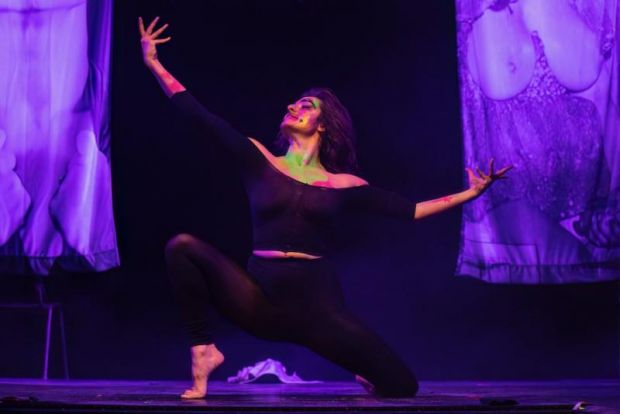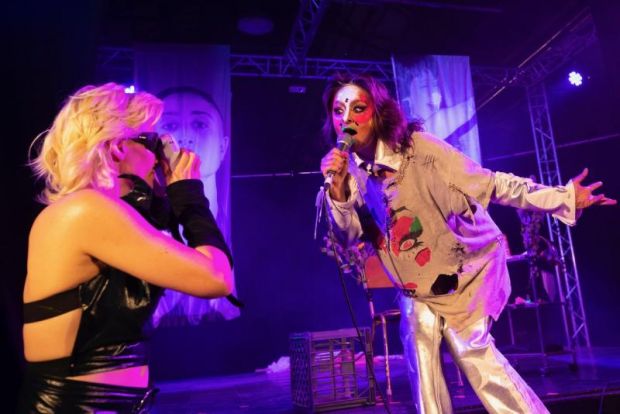Enemies of Grooviness Eat Sh*t
Buckle up, folks. This show is a roller coaster of burlesque, explicit live sexuality, grief, homage, catharsis, performance art history lesson and skyclad pagan rite. Emma May Gibson’s work is a logical extension of the tradition of wild, hippy, witchy emancipated fringe performance art that flourished in the sexual revolution of the 1960s and feminist circles in the 70s and 80s with performers like Carolee Schneeman, Annie Sprinkle and Casey Jenkins. But in a way it existed much earlier – in secessionist Vienna in the hedonistic circles of Klimt and Schiele, in Noël Coward’s secret holiday hideaways, expressed in photography by Carol Jerrems and Pat Larter.

Betty Grumble first emerged as a phenomenon out of the world of burlesque, where she was an angry satire, a vicious parody of everything that the 19-year-old Gibson perceived the culture to be asking of her, and response to traumas inflicted on her. In Enemies of Grooviness, Eat Sh!t Gibson explores how she came to develop Betty almost as a combined shield and weapon. Betty Grumble seems to be a portmanteau of Betty Grable and Betty Rumble, her garish make-up recalling Bette Davis as Baby Jane Hudson. She was a vampy diva cave girl rebel who has latterly evolved into an id-demon Gibson summons from inside herself.
This show is searingly intimate poetry of movement, vision and soundscape. Emma Maye Gibson is a strong and energetic dancer and has a wonderful voice, to sing wonderful 70s and 80s hits, expertly accompanied by keyboardist Craig Slist. The work is explicit in every way, baring her traumatic experiences, her grief, her sexual response and her body. To be clear, she masturbates on stage. Her aim here seems to be to shock, but also make you question why it shocks. Why is violence more acceptable than sex, she implies. The work is rich with cultural references and symbolism. Behind her is an enormous white flag printed with a line image of her own genitalia, which she tears down and wraps herself in as if a cloak of protection while relating a story of a judge throwing her domestic violence case out of court. She casts spells, rings bells, radiates inclusion and dances with wild abandon. A superficial take might judge her nudity and sexual display to be brave and vulnerable, but no, it isn’t that. It’s a powerful, defiant reclamation.

Gibson takes pains to project acceptance and inclusion to the audience – being all about consent, she gives the audience permission to step outside or close their eyes during the more socially challenging of the sequences.
For me, it was a comfort to realise that while so much current counterculture has metastasized into toxic paranoia, sovereign citizenship, MAGAism and Q-mania, there are pockets where hippydom is still a cauldron of creativity, inclusion, freedom, expression and fun.
Obviously, this isn’t going to be for everyone. It’s for brave, broad-minded souls excited to be challenged by untethered feminist art.
Cathy Bannister
Photographer: Joseph Mayers
Subscribe to our E-Newsletter, buy our latest print edition or find a Performing Arts book at Book Nook.

